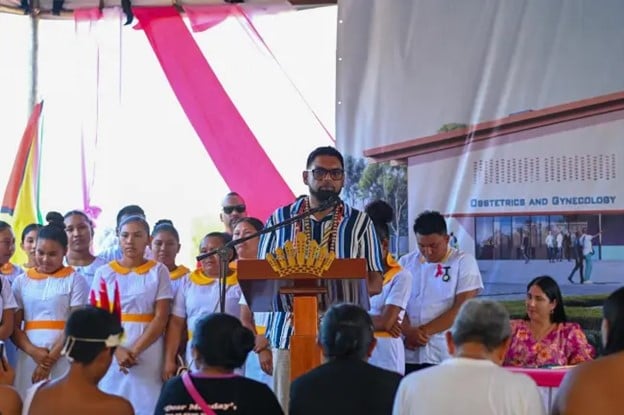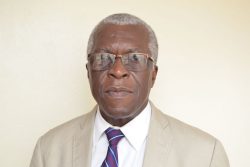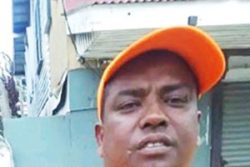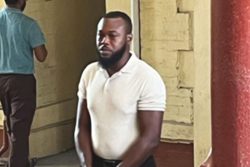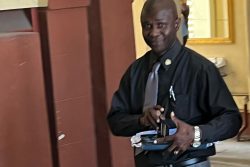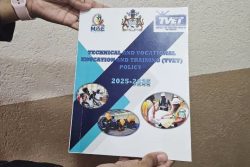– Ali announces at sod turning for Lethem Hospital, Tabatinga school
President Irfaan Ali yesterday announced that a group of Brazilian investors have signalled interest in establishing a medical school in Region Nine (Upper Takutu-Upper Essequibo) and his government is on board to make it a reality.
“Very soon we will be signing a Memorandum of Understanding with the University of the West Indies [UWI] School of Medicine and nursing schools here in Guyana. And the regional authoriies have already said to me that there is a group of investors from the State of Roraima, that wants to invest in a medical school and a medical facility,” Ali told attendees at a sod turning event for both the Lethem Hospital and Tabatinga Secondary School yesterday.
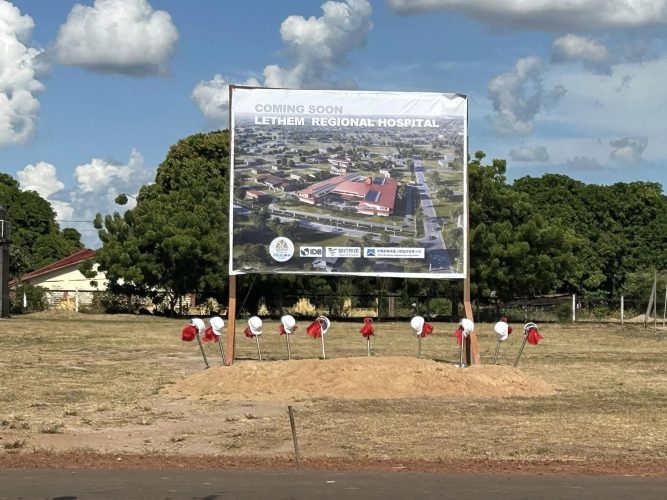
“So I have to say to all of you, let us do it. Let us build in this region, with the support of UWI and University of Guyana, a medical school that can service the State of Roraima, this region and all of Guyana, so that we can produce global medical practitioners from right here in this region,” he added.
Both sides will benefit, the President reasoned, as the Portuguese-speaking country would be able to offer its citizens globally recognized certification from an English-speaking country and Guyana would actually house the facility and be able to train its people also.
“For your citizens to be competitive they would have the opportunity of studying in an English environment and move on to global certification. We’re ready to partner with you on this endeavour and make this happen,” the President said.
As he prepared to turn the sod for the Lethem Hospital, which he directed must also be a teaching facility, Ali said that access to quality healthcare across the country remained a primary focus of his government and moves are on stream to make this vision a reality by 2030 and beyond.
Pointing to his parliamentary address from earlier this month, Ali said, “We are already thinking, if you listened to what I said in Parliament, of Guyana 2030 and beyond… How we are going to make the right investments today to ensure we have one of the most beautiful, well-structured and balanced economies in the world … We have to think about a country that will win in a global environment that is very competitive.
“I want to assure our neighbours that I have already said that the prosperity of Guyana must rebound for the prosperity of this region.”
The construction of the Lethem Hospital is being funded by a loan from the Inter-American Development Bank for a Health Care Network Strengthening programme and will be built by Chinese consortium Sinopharm at a cost pegged at US$31 million.
In December 2022, the IDB had announced its approval of a US$97 million loan to strengthen Guyana’s health care network – the first operation under a conditional credit line for investment projects (CCLIP). The IDB loan has an amortisation period of 25 years, a grace period of 5.5 years, and an interest rate based on SOFR.
According to the IDB, the overall objective of the CCLIP, which will include multiple loans, “is to improve access, quality, and efficiency of health services in the country.”
This programme, it had stated, “will expand the capacity of seven hospitals (four hinterland hospitals in Regions 1, 7, 8 and 9, Linden Hospital, New Amsterdam Hospital, and Georgetown Public Hospital) and extend the coverage of diagnostic exams and medical consultations. It will also increase the efficiency of the public health system by supporting improvements in logistics, management, and processes. Infrastructure upgrades include more efficient use of water and energy as well as accessibility provisions for disabled persons.
“It is expected that the project will benefit around 406,000 persons, over half of the country’s population. In addition, telehealth activities, which will be installed in over 15 health facilities, will reach all 10 of the country’s regions, including the hinterlands.”
As part of the investment project activities, the CCLIP will also finance Guyana’s plans for a digital transformation in health, including the expansion of the teleradiology and teleophthalmology networks. Finally, it will strengthen supply chain management, improve the provision of maternal and child health, and contribute to pandemic and emergency preparedness, among other activities.
The programme includes a gender and diversity assessment to identify and address health disparities by gender, ethnicity, and disability status. In addition, it contributes to climate change mitigation and adaptation by financing health infrastructure that is environmentally sustainable and resilient to climate change.
Meanwhile, the President yesterday said that the hospital was only a small fraction of the more than $7 billion his government has invested in healthcare since taking office in 2020. To critics that have blasted his government for focusing heavily on infrastructural development, Ali said that it was part of a plan for social measures also.
“When one speaks about, ‘oh, can we eat the road?’ or ‘we can’t eat a building’, it shows their understanding of what development is and how narrow-sighted they are. Not only does the physical infrastructure change your mindset and your culture and the way you treat the environment, it adds value to your property… but more than that, imagine if we had built this beautiful facility and then you still had to come through the old roads that you can’t pass through where there is the rainy season, to get to the facility. What would have been the scenario? Development is multifaceted,” he said.
The double sod-turning event, he said, was “because we want to start demonstrating the integrated way in which development supports each other. If the healthcare system is not strong. You can’t support healthy children in the school system…”
The President said that understanding the current development paradigm was needed as “we have to look beyond the superficial nature of those commentators who would see everything wrong, but don’t have a clue as to what it takes to fix it.”
Integrated development, according to Ali, can be seen through the healthcare data not only for the region but across the country.
He added that money plugged into healthcare in Region Nine had resulted in a reduction of the number of referrals to the Georgetown Public Hospital and the Boa Vista Hospital in Brazil. With the new hospital, he said, those numbers would decrease even more significantly.
Newborns especially, the President said, have been able to stay and be treated in Region Nine as data showed that from 2020 to now, neonatal referrals moved from 20% to 3%.
“This is just four years to support the interconnectivity of the healthcare system in this region that is the health centres to the main hospital. We set up a telemedicine facility. We have delivered 13 new ATVs, six ambulances, 5 SUVs, four minibuses, one Canter, 10 motorbikes, four 4X4 vehicles…,” he said. “That is to create the connectivity between the health centres and the Lethem Hospital. Isn’t this development? Isn’t this real progress?” he questioned.
To the contractors, Ali sent a stern message that when the set construction timeframe was up, he didn’t want to hear any excuses. “They know they better finish it. I don’t want to hear about rain…,” he warned.
When the facility is completed, it will have two fully functional operation rooms, a modern emergency room with a procedure room for minor surgery, diagnostic imaging services, digital x-ray services, a CT machine, three ultrasound machines, laboratory services, specialised clinics and pharmacy services among others, he said.
The investment, Ali said, was demonstrative of a government that cares for the people of the region and was bridging the divide in access to modern services offered in the city as compared to that of far-flung areas.
“My friends, what more? What more can we do to demonstrate that we love you, that we care about you, and we want the best for each and every one of you? ” the President asked rhetorically.
